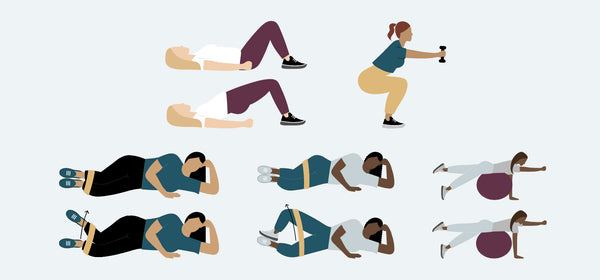Understanding Your Pelvic Floor: Its Impact on Daily Life, Bladder Health, and your Period

What is the Pelvic Floor?
The pelvic floor is a vital but often overlooked part of the body, playing a crucial role in maintaining overall health and well-being. This complex network of muscles, ligaments, and tissues forms a supportive structure at the base of the pelvis, supporting organs such as the bladder, intestines, and uterus in women. Let's explore what the pelvic floor is, how its health influences your daily life, and its connections to bladder health and your period.
Anatomy Lesson
The pelvic floor consists of several layers of muscles that stretch like a supportive hammock from the pubic bone to the tailbone. These muscles work together to provide support for the pelvic organs, help control bladder and bowel movements, and contribute to sexual function.
Impact on Daily Life
1. Posture and Stability: A well-toned pelvic floor helps in maintaining proper posture and stability, preventing issues like lower back pain.
2. Core Strength: It forms the base of your core muscles, aiding in overall core strength and stability.
3. Sexual Function: A healthy pelvic floor is linked to sexual satisfaction and can improve orgasms for both men and women.
Bladder Health
The pelvic floor plays a significant role in bladder control. Weak pelvic muscles can lead to urinary incontinence, where you may involuntarily leak urine, especially when sneezing, laughing, or exercising. Regular pelvic floor exercises, also known as Kegels, can help improve bladder control by strengthening these muscles.
Periods
While the pelvic floor itself doesn't directly affect the menstrual cycle, it can influence menstrual health indirectly. Chronic pelvic pain, often related to pelvic floor dysfunction, can exacerbate menstrual discomfort. Additionally, maintaining a healthy pelvic floor can contribute to overall well-being, potentially easing menstrual symptoms like cramps and back pain.
What can you do to improve and maintain the health of your Pelvic Floor?Regular exercise, a balanced diet, and proper posture can contribute to pelvic floor health. If you experience symptoms like pelvic pain, incontinence, or discomfort during sex, it's essential to consult a healthcare professional or a pelvic health physiotherapist. Taking care of your pelvic floor can lead to improved overall well-being and a better quality of life.
0 comments